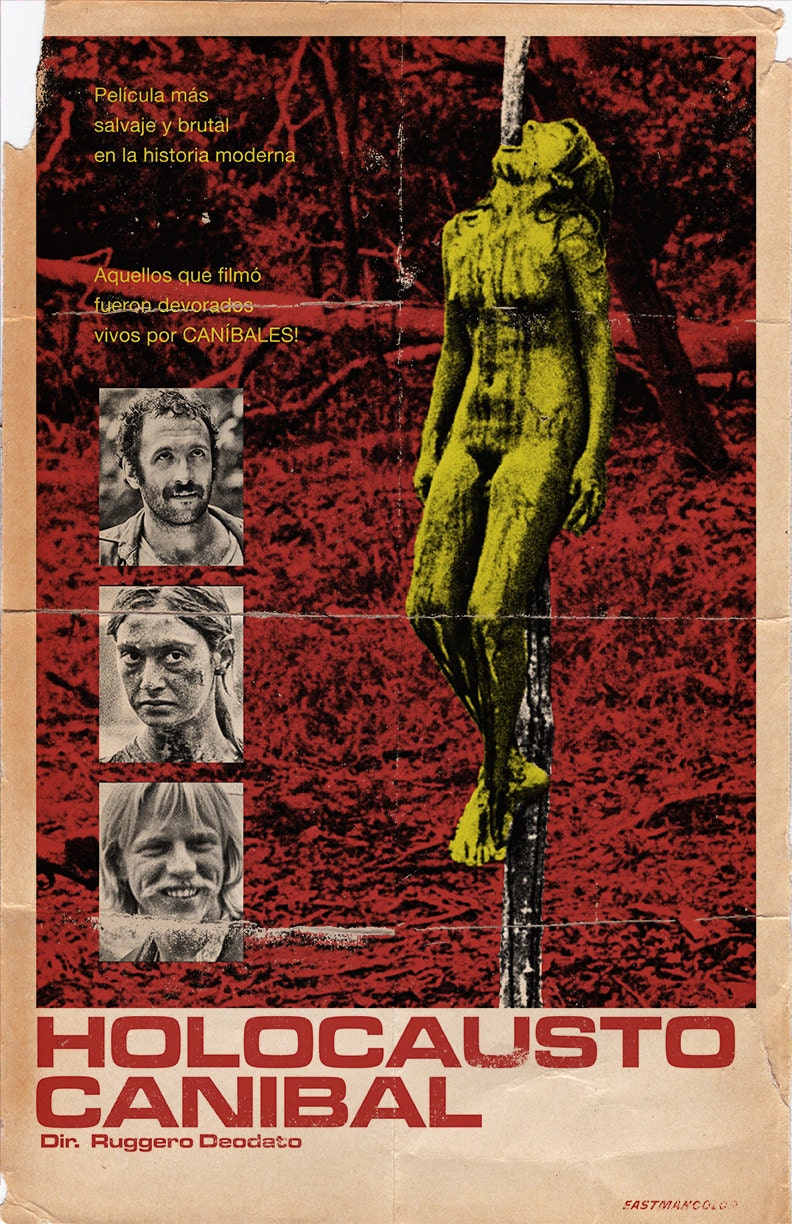
Aristide Massaccesi’s (aka: Joe D’Amato) erotic gut-munching variants, Emanuelle and the Last Cannibals (Italian: Emanuelle e gli Ultimi Cannibali aka: Trap Them and Kill Them, 1977) and Papaya, Love Goddess of the Cannibals (Italian: Papaya dei Caraibi, 1978) tend to be tolerable, because the downplayed cruelty is merely window dressing for harmless softcore pornography.

Lenzi’s final word on the subject, Cannibal Ferox (aka: Make Them Die Slowly, 1981), pushed grievous bodily harm into the realms of parody. At their best (a relative term), they were notable and are remembered for their increasingly revolting on-screen atrocities.

Unfortunately – or fortunately, depending on your point of view – the early cannibal movies were more popular for their grueling violence than their swashbuckling antics, so, like the pseudo-documentary Mondo travelogues they followed (perhaps the only more tasteless and controversial Italian exploitation genre), filmmakers took it upon themselves to one-up each other with harrowing gore and callous sexual content. You know, respectably xenophobic white savior movies. The first couple films in the cycle, Umberto Lenzi’s The Man From Deep River (Italian: Il Paese del Sesso Selvaggio aka: Deep River Savages, 1972) and Ruggero Deodato’s Last Cannibal World (Italian: Ultimo Mondo Cannibale aka: Jungle Holocaust and Cannibal, 1977) follow the plot of Silverstein’s film pretty closely and, despite their grindhouse trappings, also have plenty in common with later revisionist adventures, such as Kevin Costner’s Oscar-winning epic Dances with Wolves (1990)*. Johnson), in which an English aristocrat (Richard Harris) is captured and eventually adopted by Sioux Indians.

The genre began auspiciously enough in reference to Hollywood revisionist adventure movies/westerns, most obviously Elliot Silverstein’s A Man Called Horse (1970, based on a 1950 story by Dorothy M.

The stylishness, camp, and surrealism that made the region’s other horror and exploitation traditions (zombie movies, gialli, and nunsploitation) tolerable – even lovable – was replaced with raw filmmaking, rampant racism, graphic sexual violence, and, most disturbing of all, actual on-screen animal slaughter. The cannibal movies released throughout 1970s and early ’80s sit high on the list of the most tasteless, mean-spirited, and controversial feature films to have ever oozed from Italy’s movie machine.


 0 kommentar(er)
0 kommentar(er)
